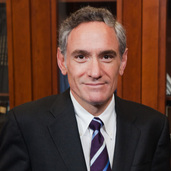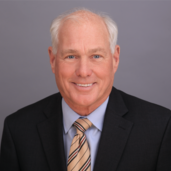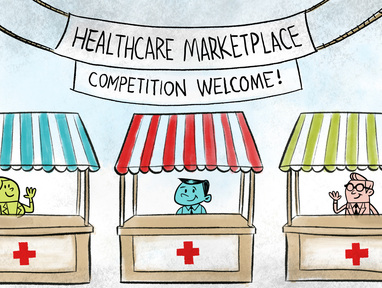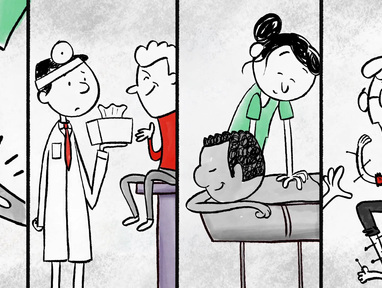Fixing Our Health Care System

The goal of any health care policy is simple: widespread access to affordable, high-quality medical care. Unfortunately, the American health care system falls far short of that objective.
In an earlier edition of Policy Insights, we examined government policies that contribute to the system’s woes, particularly its high cost. We described how the nation’s tax code and regulatory system drive up medical costs, distort medical decisions, and reduce choice and quality. Last month, we asked whether expanding the government’s role in health care could fix the problem. We found that whether it is single-payer health care or a government-run public option insurance plan, there are inevitable—and large—trade-offs between cost, quality, and coverage.
Are we stuck with the status quo, or are there reforms that could bring us closer to the health care system we want?
Can we fix our insurance system?
Health insurance bears little resemble to other types of insurance. As the video below argues, people don’t expect their automobile insurance to pay for car washes. And they don’t demand that their homeowner’s insurance replace burnt-out light bulbs. In these cases, people buy insurance to cover expensive and unexpected events like car crashes and house fires. In contrast, health insurance covers routine visits and predictable medical expenses. The result is the expensive insurance system we have today.
Why does health insurance look like this?
In our earlier Policy Insights article, we looked at the “original sin” of health care: the tax exemption for employer-sponsored insurance (ESI) premiums. The exemption—a remnant of World War II–era IRS policy—is a key reason why health care is so expensive today and why we’re stuck with expensive health insurance plans. The exemption gives tax breaks for ESI premiums but generally not for out-of-pocket health payments. The result is that people have a financial incentive to buy high-premium plans with low deductibles and copays to minimize their out-of-pocket payments. While individuals may enjoy these plans when they want medical services, the plans come with a downside. The generous coverage gives people little financial reason to consider the expense of their health care decisions, driving up health care costs and insurance premiums for everyone. Watch this video for an overview:
If we want to expand access and reduce costs, we need to fix the way insurance works. As the video below explains, well-functioning health insurance would “protect patients against the risk of significant, unexpected health care costs, rather than subsidize routine, minor expenses; and it should encourage, rather than minimize, consideration of price and value.” But how do we get to that system? It begins by rethinking the way we tax health care plans.
Can we fix the way we tax health care?
Policy makers have tried to undo the original sin of health care, but there is widespread opposition to eliminating the tax preference. For example, Congress enacted the Affordable Care Act’s “Cadillac tax” to discourage employers from offering overly generous health insurance plans, but political pressure—from businesses and organized labor—led Congress to reconsider. The tax was never implemented; Congress first delayed it before fully repealing it in 2019.
If political opposition means policy makers will not be able to eliminate the tax preference, what can be done? Economists Dan Kessler, John Cogan, and Glenn Hubbard offer an alternative. Rather than eliminate the current tax preference, they propose extending the tax break to out-of-pocket payments. This change would give people less incentive to buy high-premium insurance plans; instead, the economists argue it would encourage “people to shift to health plans with higher deductibles and coinsurance rates which, in turn, lowers health care spending.”
There are other proposals that are designed to shift Americans away from their high-premium ESI plans.
One option is to expand health savings accounts, or HSAs. These accounts allow people to contribute a portion of their pre-tax income to a savings account that can be used to pay for medical services. The intention of HSAs was to make high-premium, low-copay plans relatively less attractive. Under current law, however, strict rules reduce the effectiveness of these plans. Contribution limits are low, and many people aren’t even able to contribute to HSAs. The video below explains how expanding and liberalizing HSAs can improve incentives in the health care market and ultimately drive down prices:
Can we fix the way we regulate?
Despite COVID-related shortages and supply-chain concerns, our modern economy still delivers a standard of living that surpasses any time in history. Free markets have delivered unprecedented choices of high-quality, low-priced goods for consumers, except in handful of industries like health care. The video below offers a reason why:
As the video explains, competition is the hallmark of industries that deliver choice, quality, and low prices to consumers. But competition is missing from health care. Why? In “After the ACA,” economist John Cochrane blames laws and regulations that stifle competition:
Healthy markets do not emerge because our current web of healthcare laws and regulations forbids them from doing so, not because of intractable market failures. But deregulation is not easy. The impediments to well-functioning healthcare and insurance markets go deep into federal, state, and local law, regulation, and practice. And the pieces are linked; greater competition, innovation, and entry by suppliers, greater control by consumers, and insurance innovations that cure the current mess each need the others in order to function.
In vibrant parts of our economy, Cochrane notes, new entrants drive quality improvement and cost reductions. In health care, however, government regulations prevent would-be competitors from entering the market. Many states have Certificate-of-Need (CON) laws that strictly limit hospital expansions and construction. Similarly, many state medical licensing rules keep competing providers from practicing medicine while doing little to protect patients.
In the second half of the video below, Dr. Scott Atlas highlights several reforms that would increase competition in the health care market. For starters, we can increase the number of graduates at US medical schools, remove scope-of-practice rules that put unnecessary restrictions on nurse practitioners and physician assistants, and reform state licensing rules that prevent out-of-state doctors from offering telemedicine visits.
Conclusion
In today’s health care market, an array of taxes and regulations distorts consumer choice and prevents innovators and entrepreneurs from improving the health care market. We’ve only highlighted a few of the offending policies. There are many more that drive up prices and reduce choice. Reforming these regulations and fixing our tax code offers the best chance to deliver affordable, high-quality medical care for all.
Citations and Additional Readings
In Health, Wealthy, and Wise, economists Dan Kessler, John Cogan, and Glenn Hubbard propose several fixes to our nation’s health care system.
Dr. Scott Atlas offers a detailed plan for reforming the nation’s health care system in his book Restoring Quality Health Care: A Six-Point Plan for Comprehensive Reform at Lower Cost.










